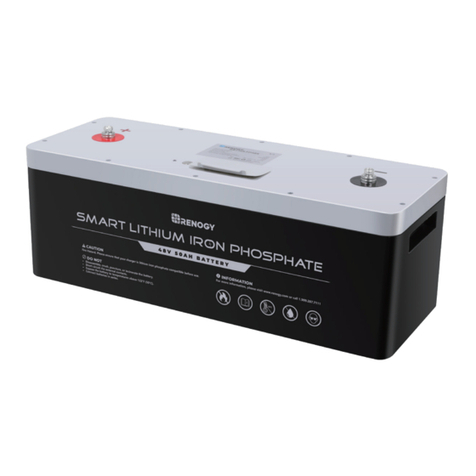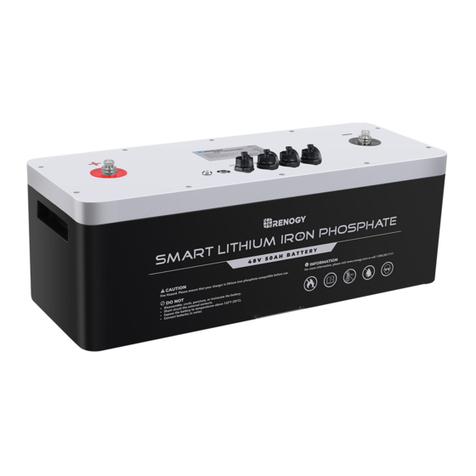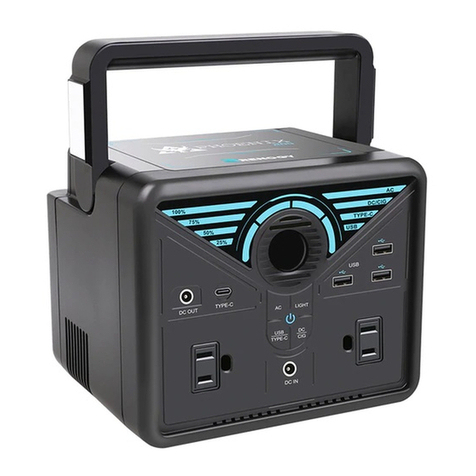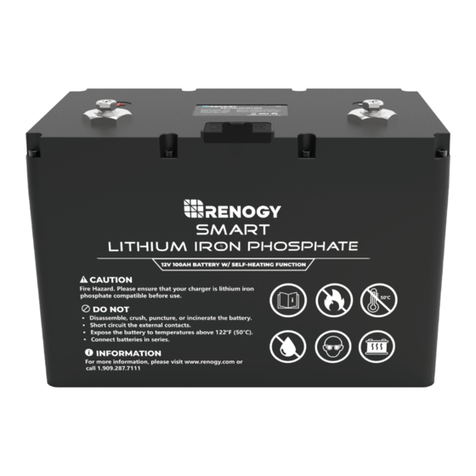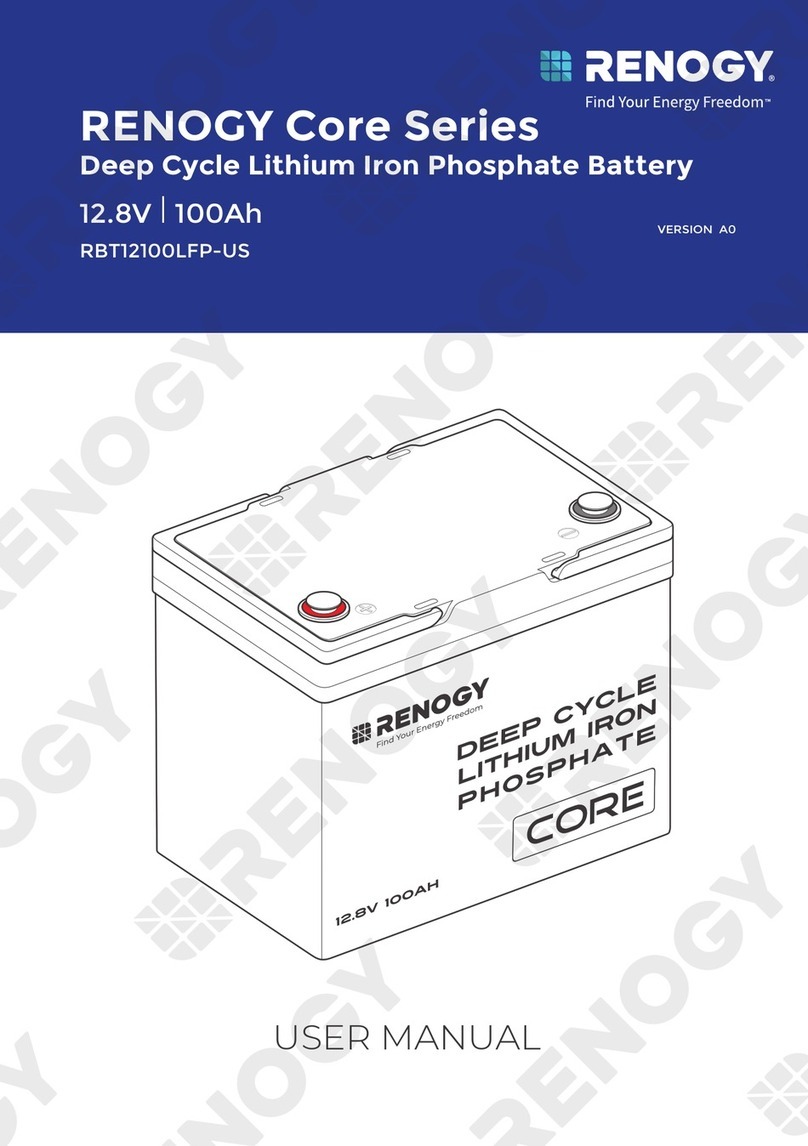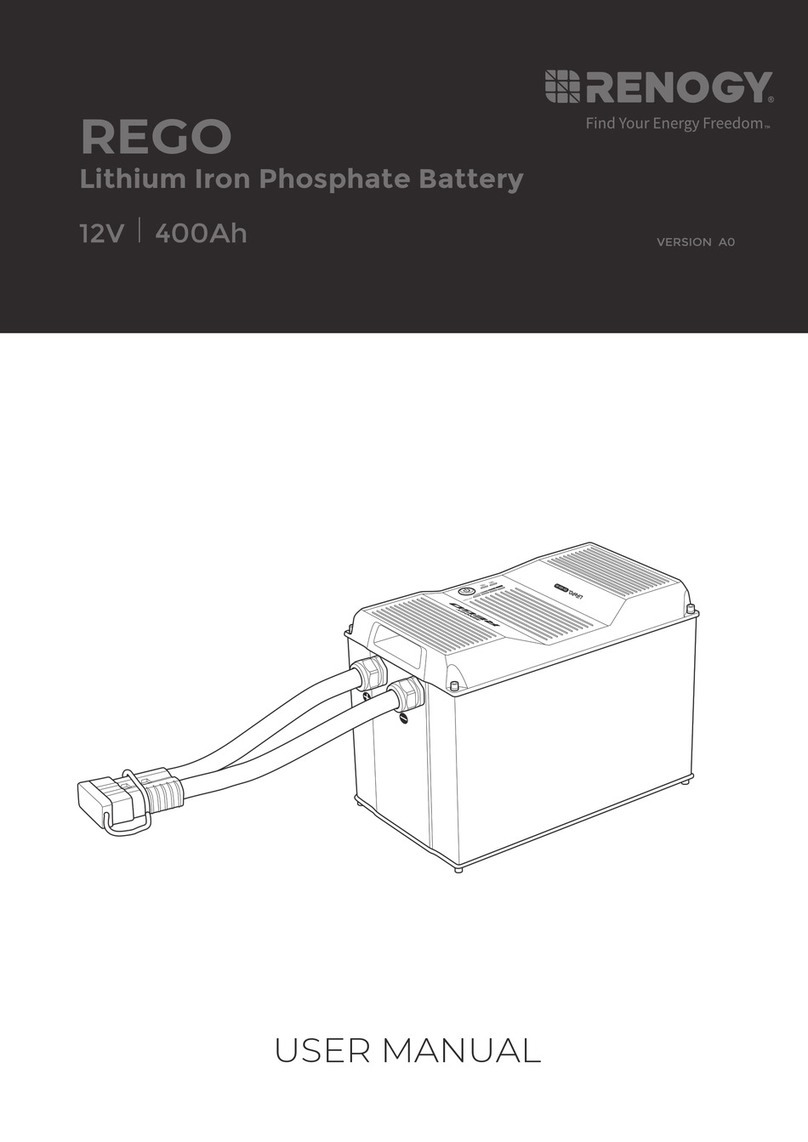
01
Important Safety Instructions
Please save these instructions.
This manual contains important installation, operation, and maintenance instructions for the
Lithium Iron Phosphate Battery w/ Bluetooth. Please observe these instructions and keep them
located near the battery for further reference. The following symbols are used throughout the
manual to indicate potentially dangerous conditions or important safety information.
Indicates a potentially dangerous condition. Use extreme caution when
performing this task.
Indicates a critical procedure for the safe and proper installation and op-
eration of the battery.
Indicates a procedure or function that is important to the safe and proper
installation and operation of the battery.
Disclaimer
The manufacturer accepts no liability for any damage caused by:
●Force majeure including re, typhoon, ood, earthquake, war, and terrorism.
●Intentional or accidental misuse, abuse, neglect or improper maintenance, and use under
abnormal conditions.
●Improper installation, improper operation, and malfunction of a peripheral device.
●Contamination with hazardous substances or radiation.
●Alterations to the product without express written consent from the manufacturer.
General Safety Information
●Please keep the battery away from water, heat sources, sparks, and hazardous chemicals
●DO NOT puncture, drop, crush, burn, penetrate, shake, or strike the battery.
●DO NOT open, dismantle, or modify the battery.
●DO NOT touch any terminals or connectors.
●DO NOT touch the exposed electrolyte or powder if the battery casing is damaged.
●Uncovered electrolyte or powder that has contacted the skin or eyes MUST be ushed out
with plenty of clean water immediately. Seek medical attention afterwards.
●Please make sure any battery charger or charge controller has been disconnected before
working on the battery.
●DO NOT connect or disconnect terminals from the battery without rst disconnecting loads.

